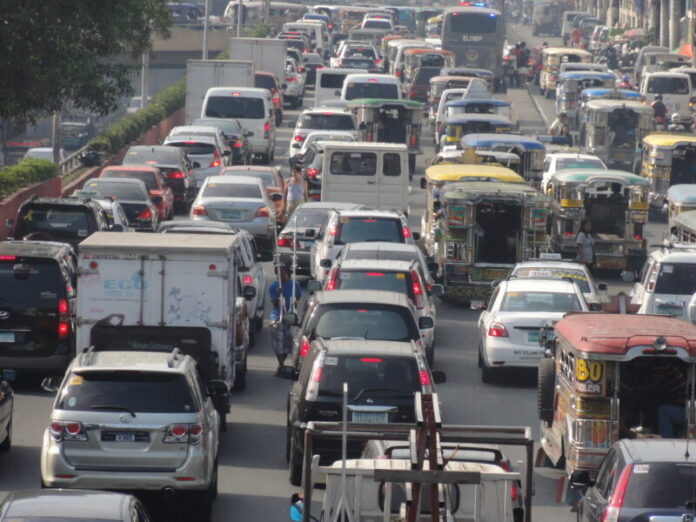
-
The government will call a traffic summit to look into solutions to one of the country’s “biggest problems”
-
President Ferdinand Marcos Jr. said a whole-of-nation approach is needed, one that involves participation of local government units and the community
-
He said part of the solution is the development of nearby provinces and cities
The government will schedule a traffic summit to discuss solutions to one of the country’s “biggest problems,” President Ferdinand Marcos, Jr. said.
In a vlog posted on April 7, Marcos said the Philippines has gained notoriety overseas for its traffic jams.
He said a whole-of-nation or holistic approach is required with the participation of local government units and the community.
A Japan International Cooperation Agency study had placed at P3.5 billion, at least, the daily cost of Metro Manila traffic to the Philippine economy, or P1.27 trillion annually.
“Sa susunod na mga araw ay tatalakayin pa natin ito nang mas detalyado kasama ang iba’t-ibang ahensya at LGUs. Abangan ninyo at makikilahok rin kayo kahit sa comment section para malaman namin ang mga iba pang idea na naisip niyo,” Marcos said.
(In the next few days, we will go into a more detailed discussion together with different agencies and LGUs. Wait for it and participate by giving your comments,” said Marcos.
Socioeconomic Planning Secretary Arsenio Balisacan earlier said Cabinet members had a “very long discussion” on the traffic issue during a meeting on April 3 and that Marcos has instructed “everyone to submit their recommendations, how their respective offices will adjust and configure their work environment.”
He added, “But what the President really wants is a comprehensive, holistic approach to solving the traffic problem – hindi iyong (not) piecemeal approach as has been the case all these years.”
Marcos noted that various solutions and infrastructure projects to solve the traffic problem have been implemented by previous administrations, “merong matagumpay, merong hindi naman masyado (some successful, some not)” but that we should not stop looking for solutions.
Part of these solutions is the development of nearby provinces and cities.
“Congested ang Metro Manila, kung kaya bahagi talaga ng pag-paplano ay mai-develop ang mga kalapit na probinsya at siyudad. ‘Yan ang mga nakikita natin ngayon na developments. Ang Bulacan, Pampanga sa North at Cavite and Laguna sa South,” Marcos said.
“Kaya pati ang mga kalye at tulay na papunta sa mga lugar na ‘yon ay patuloy ring pinapaganda pa. Pati na rin ang airport,” he added.
(Metro Manila is congested which is why part of our plan is to develop nearby provinces and cities… Bulacan, Pampanga in the North and Cavite and Laguna in the South.
This is also why roads and bridges going to these areas we are improving. The same goes with the airport.)
He acknowledged these development projects outside Metro Manila may take some time and may even add to the congestion before any relief is felt.
“Kaya’t pag-tyagaan ninyo lang, pero pagka-nabuo na ‘yan, asahan ninyo gaganda ang sitwasyon natin,” the chief executive added.
(Let’s be patient because once done our situation will improve.)
While several measures are being implemented by the government to address traffic problems in Metro Manila, Marcos emphasized those measures will remain ineffective if people remain undisciplined on the road.
“Pero ang higit na kakulangan nating mga Pilipino sa daan ay disiplina. Dapat susunod tayo sa traffic rules. Para tayong mauubusan lagi ng kalye. May bago mang kalye, kung luma pa rin ang ugali ay wala pa rin,” Marcos said.
(But what we lack the most is road discipline. We should follow traffic rules, it’s like we’ll run out of roads. New roads won’t make up for bad habits.”




